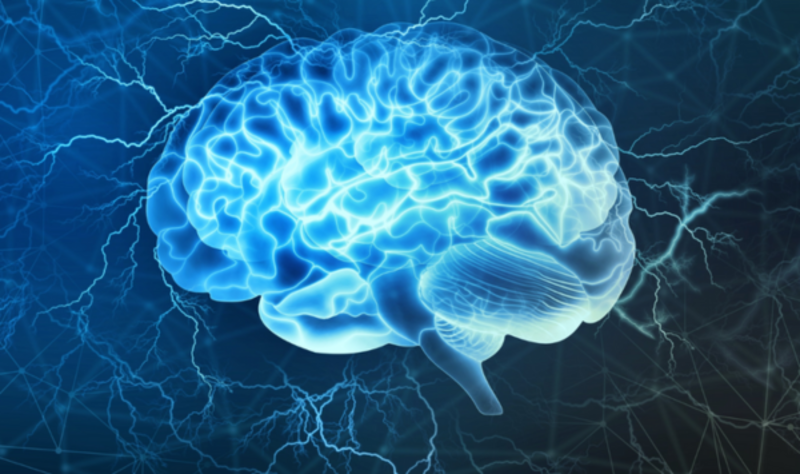New therapeutic approach for rare childhood brain disease
Neuropathology(07.08.2025) Freiburg physicians show for the first time that immune cells in the brain are involved in the disposal of metabolic products. The result was published in the journal Nature.
Researchers at the Freiburg University Medical Center, together with an international team from Mannheim, Göttingen, Boston (USA), Fukuoka (Japan) and the Max Planck Institute of Immunobiology and Epigenetics (MPI-IE) in Freiburg, have discovered that immune cells in the brain support nerve cells in the disposal of metabolic products. They were able to show that a disruption of this previously unknown function leads to the rare, severe childhood dementia Sandhoff's disease. Fatty acids cannot be broken down in the brain, which ultimately leads to the death of the children. Based on the results, a therapy can now be developed that targets the cause of the disease. This finding may also be of significance for other neurological diseases. The study was published in the journal Nature on August 6.

Microglial cells support nerve cells in the breakdown of lipids. The discovery of this mechanism opens up new therapeutic approaches for the rare, fatal Sandhoff disease in children. ©Adobe Stock
An important step towards a specific therapy
"Our results impressively show how important the interaction between immune and nerve cells is for brain health - this opens up new therapeutic perspectives, not only for Sandhoff's disease, but also for other neurodegenerative diseases," says study leader Prof. Dr. Marco Prinz, Medical Director of the Institute of Neuropathology at the Freiburg University Medical Center and member of the Cluster of Excellence Centre for Integrative Biological Signalling Studies (CIBSS) at the University of Freiburg. "This is an important step towards a specific therapy for Sandhoff's disease."
What are lysosomal storage diseases?
Lysosomal storage diseases are rare, genetically determined metabolic disorders. Cellular degradation processes do not function correctly - especially in the lysosomes, the cell's "garbage chutes". The result: fat and sugar molecules accumulate and damage the brain, among other things. In Sandhoff's disease, the fatty substance GM2 in particular accumulates in the nerve cells - with severe neurological consequences, including complete dementia and death in childhood.
Nerve cells can only break down lipids with support
The research team has now discovered that so-called microglial cells - the immune cells of the brain - secrete an enzyme called β-hexosaminidase in a healthy state. This enzyme reaches neighboring nerve cells where it helps to break down GM2. If this enzyme is missing, as in Sandhoff's disease, GM2 fat molecules accumulate in the nerve cells. This in turn activates the microglial cells in an unusual way: They recognize the GM2 via a special receptor and begin to release pro-inflammatory messenger substances. The result: a destructive immune reaction in the brain.
New understanding - new therapeutic approaches
The researchers were not only able to decipher this previously unknown signaling pathway, they were also able to demonstrate it: If microglial cells in the mouse model are specifically replaced by healthy immune cells from the blood, the progression of the disease can be halted. The nerve cells break down GM2 again, the inflammatory reactions decrease and the animals survive their otherwise fatal disease. "Our study shows that microglial cells are not only guardians of the brain, but also actively contribute to the health of nerve cells - by helping them to dispose of metabolic waste," explains first author Dr. Maximilian Frosch, a physician at the Institute of Neuropathology at the Freiburg University Medical Center. "This mechanism could also play a role in Alzheimer's, multiple sclerosis and other neurological diseases."
Looking to the future
The same molecular changes were also found in the tissue of deceased Sandhoff patients as in the mouse model - a strong indication of the transferability to humans. "In the long term, genetically modified immune cells or specific active substances that intervene in this newly discovered signaling pathway could offer new treatment options for numerous neurological diseases," says Prinz.
Original title of the study: Microglia-neuron crosstalk via Hex-GM2-MGL2 maintains brain homeostasis
DOI: 10.1038/s41586-025-09477-y.
Link to the study: https://www.nature.com/articles/s41586-025-09477-y
More interesting articles
University Medical Center Freiburg
Central InformationPhone: 0761 270-0
info@uniklinik-freiburg.de
Corporate Communications
Breisacher Straße 15379110 Freiburg
Phone: 0761 270-84830
kommunikation@uniklinik-freiburg.de



